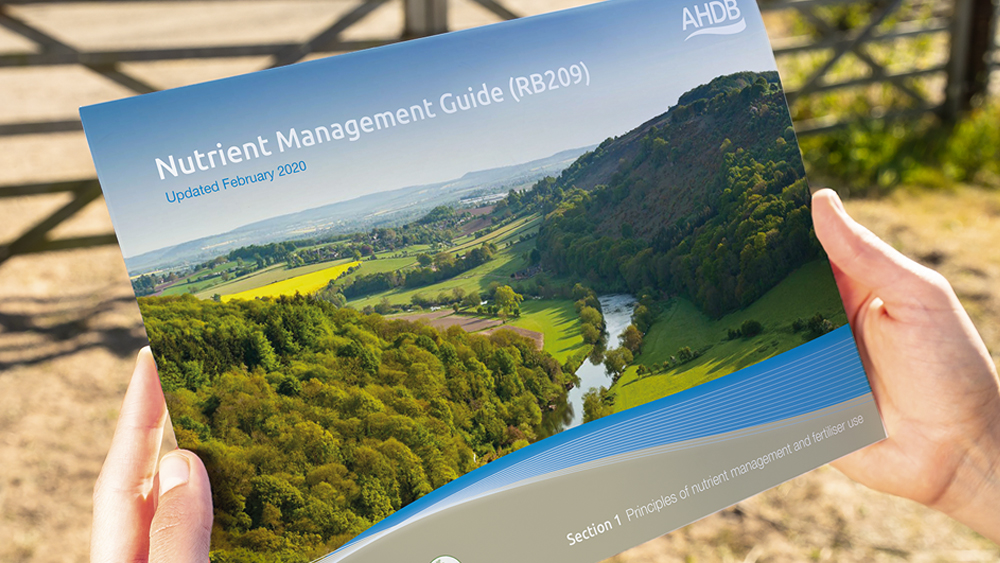- Home
- Knowledge library
- Analysis of top and subsoil data from the HS2 rail project
Analysis of top and subsoil data from the HS2 rail project
Summary
More than 1,400 data, collected as surveys along the High Speed 2 (HS2) routes from London to Crewe and Leeds, were analysed. Samples, topsoil and upper subsoil (to 50 cm), were measured at NRM Laboratories. The main trends identified will help inform revisions of the AHDB Nutrient management guide (RB209).
Overall arable phosphorus (P) and potassium (K) levels showed more deficiency than routine Professional Agricultural Analysis Group (PAAG) surveys. This is, in part, because the latter data was sampled to 15 cm depth, compared to full depth of identifiable topsoil (22–35 cm) in the HS2 surveys. The discrepancy from PAAG was even more extreme on grassland, which was sampled to at least 20 cm in the HS2 samples.
Soil texture has a major influence on nutrient levels; P deceases from light-to-heavy texture, with the contrary trend for K and Mg. The persisting incidence of many low and high samples on arable and grassland indicates that RB209 uptake is limited and/or the RB209 method for equalising index using builds/run-downs needs modification according to soil type.
In many cases, upper subsoil P is about half topsoil P. However, when above 35 mg/l, the subsoil P can rise rapidly on lighter soils. Clay soils have proportionately less P in subsoil, but levels are variable, probably linked to the degrees of organic matter carry-down into subsoil. A guide limit of 35 mg P/l in topsoil is suggested for applying P fertiliser, whenever subsoil has underdrains, groundwater or is sandy/sandstone. P in the upper subsoil declines with depth and risk of transmission in heavy soils is best gauged by measuring P below 40 cm depth.
For the same topsoil K, subsoil K is lower in sand, light loamy or stony subsoils, compared to medium or clay subsoils. Subsoil K is not wholly predictable from texture and topsoil K, though usually is >90 mg/l when topsoil is >150 mg/l. Potassium response trials need to measure subsoil K. Revision of target to the upper part of index 2- (150–180 mg K/l) should guarantee supply from subsoil, if the topsoil dries out. Clay subsoils were rarely lower than 90 mg K/l, except Carboniferous clays, which are poor K status, compared to Triassic (red) or Southern (younger) clays. A table is proposed to categorise which clays are high K-releasing, non-releasing and intermediate.
Magnesium (Mg) is higher on clay soils and ultra-high Mg (index 6, 7) was found in some Midlands and Carboniferous formations – on these, low K:Mg ratio was common. A provisional recommendation is that K target index should be raised to 2+ on ultra-high Mg soils. Low Mg occurred mainly in the Southern region and on lighter or stony soils, where the subsoil Mg was lower than topsoil, contrary to the trend on medium and heavy subsoils.
Subsoil pH usually exceeded topsoil pH on arable and grassland, though it could be close to parity on some extensive grassland and woodland. Measurement of subsoil pH is recommended on clays when pH is below 5.5, lighter soils below 5.8 and all soils below 6.0 and not limed within five years. A calculation is given for lime requirement of subsoil.
Organic matter (OM) shows a limited increase with clay content, from 3% on light to 4.5% on heavier soils. Realistic targets are given for arable farmers. Loss on ignition methods are unsuitable and there is a need to standardise depth protocols for measuring OM in topsoil and in subsoil. Corer/gouge auger is preferable to Dutch auger.
Grassland and woodland have significantly higher OM than arable land in the topsoil. Tentative values are cited for carbon stocks to 50 cm depth.
C:N ratio is typically 10–11:1 but varies from 8–14:1, decreasing with clay content and increasing with carbon content. Total nitrogen is best measured directly, rather than inferred from carbon measurement.
Downloads
RR95 final report RR95 final report (WP1 A East Midlands to South Yorkshire) RR95 final report (WP2 B Leamington Spa to Crewe and Nottingham) RR95 final report (WP3 C London to Leamington Spa)Related resources


